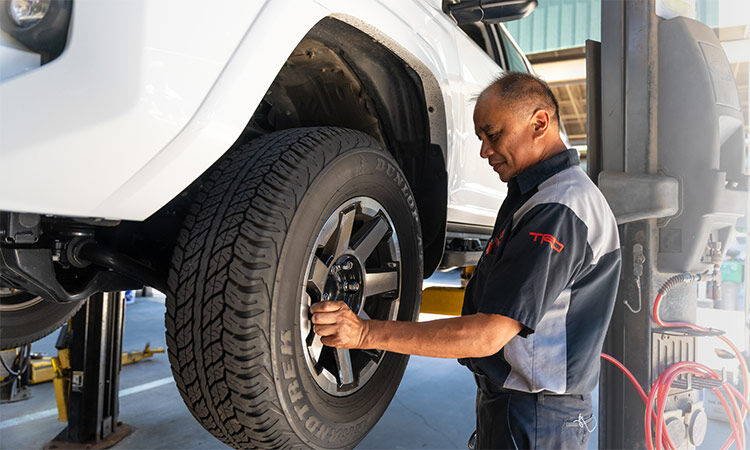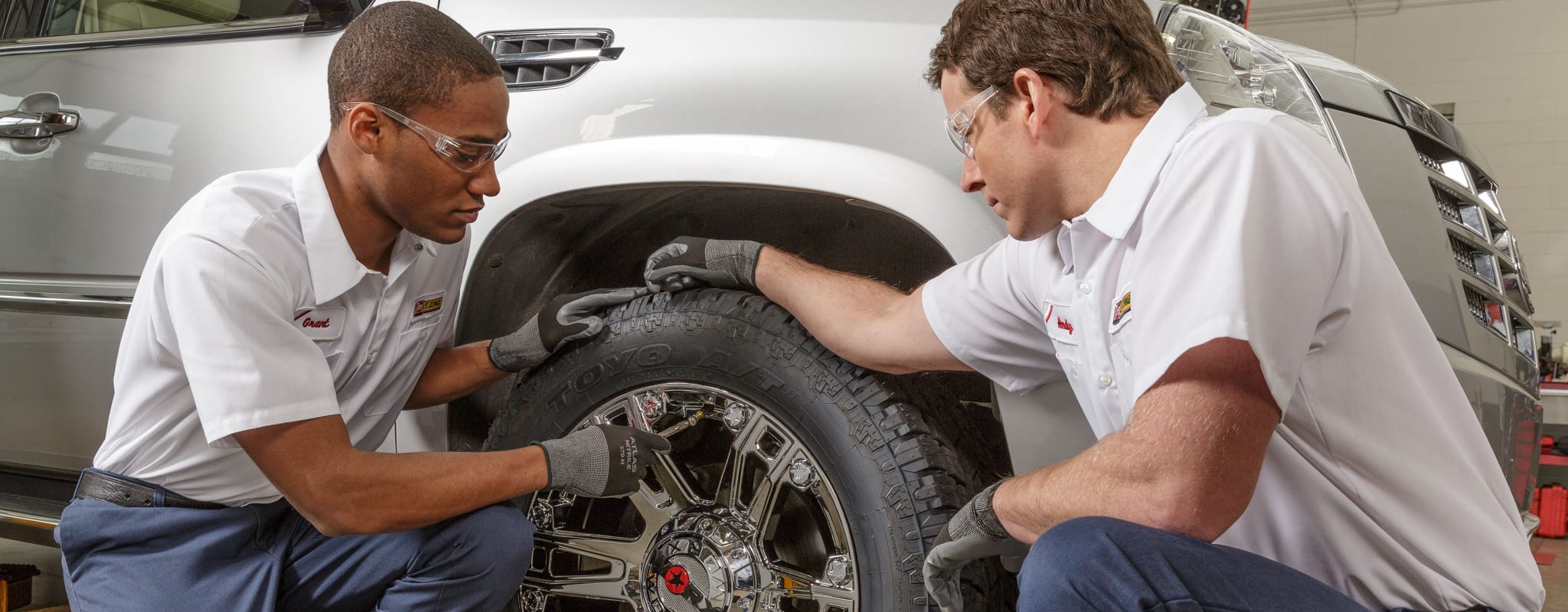Experience Accuracy with GMC Tire Service at Morris Tires
Tire Service: The Influence of Weather
When it involves guaranteeing ideal efficiency and safety and security when traveling, recognizing the effect of climate condition on tire service is critical. From scorching warm to icy roadways, each weather condition aspect can dramatically influence tire capability and general driving experience. By delving into the results of differing climate problems on tires, chauffeurs can acquire important insights that may enhance their automobile's performance and longevity. In this discussion, we will certainly check out the elaborate partnership in between weather and tire service, clarifying the relevance of weather-specific tire upkeep methods and factors to consider.
Warmth and Tire Efficiency
When exposed to heats, tires experience modifications in efficiency that can significantly affect vehicle security and handling. The warmth produced from long term driving or heat problems triggers the tire rubber to soften, bring about minimized step life and boosted wear. As the rubber comes to be softer, the tire's grasp on the road diminishes, impacting stopping distances and general grip. In extreme situations, too much warm can also trigger tire blowouts, presenting a serious safety and security risk to the lorry and its occupants.

Cold Weather Effects
Cold weather problems can have a considerable influence on tire performance and safety. In cold climate, tires might additionally lose air pressure more quickly, which can impact dealing with and fuel performance.
To mitigate the effects of winter on tires, it is critical to on a regular basis examine tire pressure and inflate them to the maker's recommended levels. Utilizing wintertime or all-season tires made for chilly weather conditions can also enhance grip and grasp on icy or snowy roadways. Proper tire upkeep, consisting of normal inspections for wear and damages, ends up being even much more vital throughout colder months to guarantee ideal performance and safety and security.
Rainy Conditions Effect
Throughout wet problems, tire efficiency and security can be dramatically influenced by the wet road surface areas and minimized visibility. The step pattern of tires plays an essential function in maintaining traction on damp roads. Tires with damaged footsteps are extra susceptible to hydroplaning, where a layer of water develops between the roadway and the tire surface, causing loss of traction. To battle this, vehicle drivers must frequently check their tires for sufficient walk depth and take into consideration spending in tires especially designed for wet conditions.
Additionally, rainy weather can also reduce visibility, making it testing for vehicle drivers to see the roadway in advance plainly (GMC Tire Service). In such conditions, it is over here essential to readjust driving speeds accordingly and preserve a secure complying with range to permit abrupt quits. Properly inflated tires can also assist in keeping control on damp roadways by giving much better handling and hold
Snow and Tire Security
When driving in snowy problems, having the right tires have a peek at this site can make a significant distinction in safety and performance. Winter months tires are created with unique rubber substances and step patterns to provide far better traction on snow and ice contrasted to all-season tires.

Furthermore, chauffeurs need to think about installing tire chains in extreme snowy problems. Tire chains provide additional traction by grasping the snow and ice, improving stability and control. It is vital to follow maker directions when mounting and utilizing tire chains to prevent damages to the tires and vehicle (GMC Tire Service). By selecting the best tires, preserving proper inflation, and thinking about added grip aids like tire chains, chauffeurs can enhance their safety when navigating snow-covered roadways.
Weather-Related Tire Upkeep
When faced with numerous climate condition, correct tire maintenance ends up being an important element of automobile safety and efficiency. Weather-related tire maintenance incorporates a variety of practices targeted at ensuring ideal tire function and long life in various climate circumstances. One vital element of weather-related tire maintenance is tire pressure regulation. Rising and fall temperature levels can trigger tire pressure to differ, impacting traction and gas efficiency. Regularly readjusting and examining tire stress according to supplier recommendations is important for risk-free driving in altering weather. In addition, tire step depth plays a substantial function in dealing with different climate aspects. Tires with adequate tread deepness provide far better grip on damp or icy roadways, reducing the risk of skidding or hydroplaning. Evaluating tire step frequently and changing tires when tread wear reaches a particular deepness is crucial for maintaining traction and stability in damaging weather condition. By focusing on weather-related tire maintenance, vehicle drivers can enhance safety, enhance lorry performance, and extend the lifespan of their tires.
Conclusion
In final thought, weather condition problems have a considerable influence on tire performance and safety. From heat influencing tire stress and put on to useful source winter decreasing traction, it is necessary to consider the climate when maintaining and using tires. Stormy conditions can decrease hold and lead to hydroplaning, while snow can boost the danger of mishaps if tires are not appropriately geared up. Weather-related tire maintenance is crucial in ensuring optimum performance and safety on the roadways.
In this discussion, we will certainly discover the detailed relationship between weather problems and tire solution, dropping light on the value of weather-specific tire upkeep methods and considerations.
